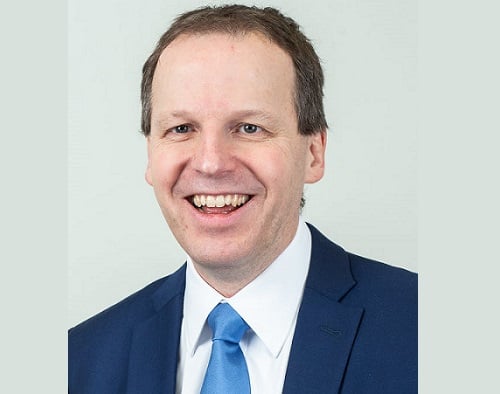

Wildfires have impacted Canada for thousands of years and until 2003, insured losses from these events remained relatively low. Since that fateful year however, when a fire in Kelowna, BC led to $254 million (in today’s dollars) in insurance payouts, losses from wildfires have been rising sharply, according to a new report from the Swiss Re Institute, Wildfire in Canada: Fostering Resilience.
“Wildfire risk is an emerging risk, meaning that while it’s always been around, it’s becoming much more relevant for society. I think that’s true for many countries, but also Canada,” said Balz Grollimund (pictured), head of the treaty underwriting team for Canada and English Caribbean at Swiss Re. “We’ve seen [that] in the last few years, especially Fort McMurray in 2016, [which] has shown us that wildfires are not just something that happens eventually and creates some local damage. It can really create significant impact to communities.”
While wildfires occur annually, their number, severity, and the size of the burned area vary widely from year to year. In Canada, forests are spread across 350 million hectares of the country, in addition to 50 million hectares of non-forest wooded or tree-covered land, according to Swiss Re. The area burned appears to have been growing since 2010, though the number of fires each year has stayed flat or has even seen a modest decline.
Human activity, and particularly the settlement of communities in the wildland-urban interface, brings with it added exposures as well as more sources of ignition, though climate also plays a role. Longer, drier summers can make wildfire seasons last longer and create more fuel as wood dries out.
“There are more thunderstorms, so more lightning and more potential sources of the wildfires, and there’s also a tendency for wetter winters, which means there’s more vegetation growth and more fuel to burn in the following summer season,” explained Grollimund, adding that another reason for the change in risk is that important wildland-urban interface. “More [people] are starting to move into the wildland in terms of where we live. There are more and more cottages – and also more high-value cottages – as well as just whole communities related to, for instance, the oil sands production in the case of Fort McMurray, but also other areas where we didn’t have any civilization in these remote forested areas a few decades ago.”
With heightened exposure and rising insured as well as economic losses, insurers’ interest in wildfire modelling is also on the rise. However, wildfire risk modelling is still in its infancy, and has lagged behind modelling in other areas relevant to insurance and natural catastrophes.
While there have been a few first attempts to model and quantify wildfire risk, according to Grollimund, “We’re far from a place where we are with other perils, where we can have a very good view on what the risk is – for a specific location, or for a whole society, or for a whole portfolio of exposures. That’s mainly because wildfire had not been such a big topic until maybe 10 years ago, so there hasn’t been as much emphasis put on this peril when you compare it to flood or earthquake or storm, where historically more time and effort has been spent in understanding that risk.”
With California becoming a hotbed of wildfire activity, the focus is nonetheless shifting towards developing wildfire risk models, though the main challenge is that the source of a fire can be random – a group of campers can light a fire in the wrong place, lightning can strike a particularly dry area, or a powerline can touch a branch in a high-risk zone. Those incidents are hard to predict, as is forecasting how a wildfire will spread, which is dependent on the conditions of the vegetation and wind.
“As we saw in Fort McMurray, the wind can turn on a dime, and determines whether a community is spared or not, and those things are very, very difficult to predict,” said Grollimund, adding that educating Canadians and the insurance industry on this risk is one of the goals of the recent report.
“What we want to do at the end of the day is we want to support society, we want to make Canada more resilient, and keep it resilient. If we don’t understand the risk, if we cannot quantify it, then eventually that makes the risk uninsurable. We want to avoid that, so that’s why the effort now is refocusing on this peril.”
